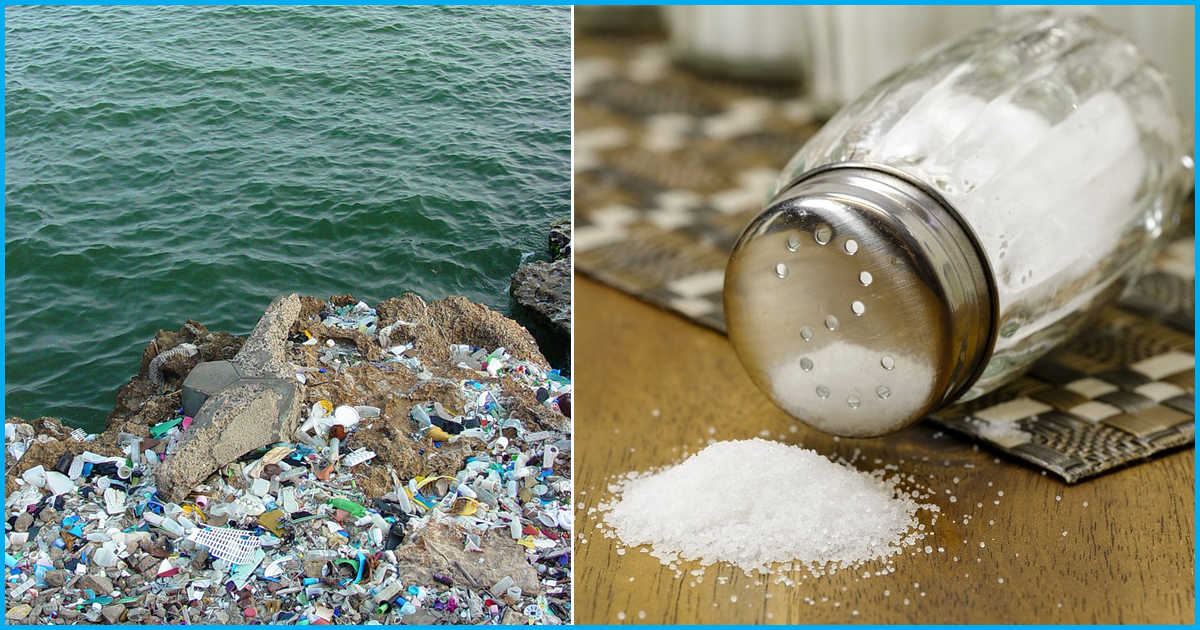
How Safe Is Your Salt? IIT-Bombay Study Reveals Plastic Pollutants In Popular Salt Brands
5 Sep 2018 6:18 AM GMT
The table salt that you are using in your food can have pollutants. A one of a kind study done by Indian Institute of Technology-Bombay (IIT-B) has revealed that most table salts sold in India are likely to contain microplastics from polluted sea water.
IIT Bombay- First Of its kind study
According to the Hindustan Times, a study done on popular salt brands in India has shown that at least 626 microplastic particles are found in the salt. Out of these 626 microplastics, 63% are plastic fragments and 37% plastic fibres. This study is done by a two-member team from the institute’s Centre for Environmental Science and Engineering (CESE).
However, the researchers have not named these popular brand as the pollutants that are found in the salt are because of sea pollution and not because of manufacturing salt or extracting it.
These pollutants, which are extremely small in size; almost less than 5 millimetres or that the size of a sesame seed is generated when large plastic debris accumulated in the ocean degrades into tiny fragments. Another reason for the accumulation of pollutants can be microfibres, or tiny synthetic fibres, that mainly releases from clothes while washing, says a US-National Oceanic and Atmospheric Administration (NOAA).
The national and international studies show that both microplastics and microfibres enter our food chain through sea food, the possibilities of salt acting as a medium are also there. The scientists have also pointed out the presence of microplastics in sea salt in various countries.
India is the largest producer of salt
“There is a global presence of microplastics in the sea-derived salts. This is the first report, with reasonable approximations, of the mass concentration of the microplastics in sea-derived salts,” said professor and author of ‘Contamination of Indian sea salts with microplastics and a potential prevention strategy’ Amritanshu Shriwastav, co-investigator, CESE.
As per the salt consumption, India is the third-largest producer of edible and industrial salt (26 million metric tonnes in 2017) followed by China and United States with 68 million tonnes and 43 million tonnes in 2017.
“The extensive dietary consumption of these Indian sea salts in multiple countries exposes a significant international population to the associated health effects of microplastic ingestion,” says Amritanshu.
Talking about the interesting study by IIT Bombay, Ministry of Earth sciences, Secretary, Madhavan Nair Rajeevan, said that the National Centre for Coastal Research and National Institute of Ocean Technology are starting a project to check sea pollution in India.”
He also said that as most of the plastic that goes in the sea, travels via rivers or estuaries, which is why the Ministry has started discussions on assessing the source of plastic that lands into the sea.
The World Health Organisation has recommended a specific quantity (5 gm) of salt intake for adults. While IIT Bombay has estimated 63.76 micrograms (0.063 milligrams) of microplastics per kilogram of salt. So, Indians must be consuming estimated to be approximately 117 micrograms (0.117 milligrams) every year. The effect of consumption of 117 mg of microplastics annually is yet to be ascertained.
According to a 2017 report by Orb Media, governments across the globe do not have any standards on the safe threshold for plastic in water and food. But the report has shown that the microplastics found in the sea absorb toxic chemicals, that are also released in the sea and later consumed by sea plants and animals.
To prevent toxic pollutant intake
In the last four years, microplastics and microfibres were found in sea-derived salt in China, Spain, Turkey, UK, France, US, as well as in 17 brands of salt from Australia, France, Iran, Japan, Malaysia, New Zealand, Portugal and South Africa that were bought from a Malaysian market.
The researchers have come up with simple sand filtration of artificially contaminated seawater to reduce the transfer of microplastics into sea salt.
According to them, they were able to eliminate more than 85% microplastics by weight and more than 90% of the toxic particles that can lead to potential human health risk.
They also said that the next thing they would be doing is to test their method on a large scale by collaborating with different industry. Shockingly, there are more than five trillion pieces of plastic floating in the world’s oceans, as per to the study done published in a Public Library of Science journal in 2014.
Also Read: Salt: A Daily Consumption Commodity, But Do We Know Its Basics?
 All section
All section













